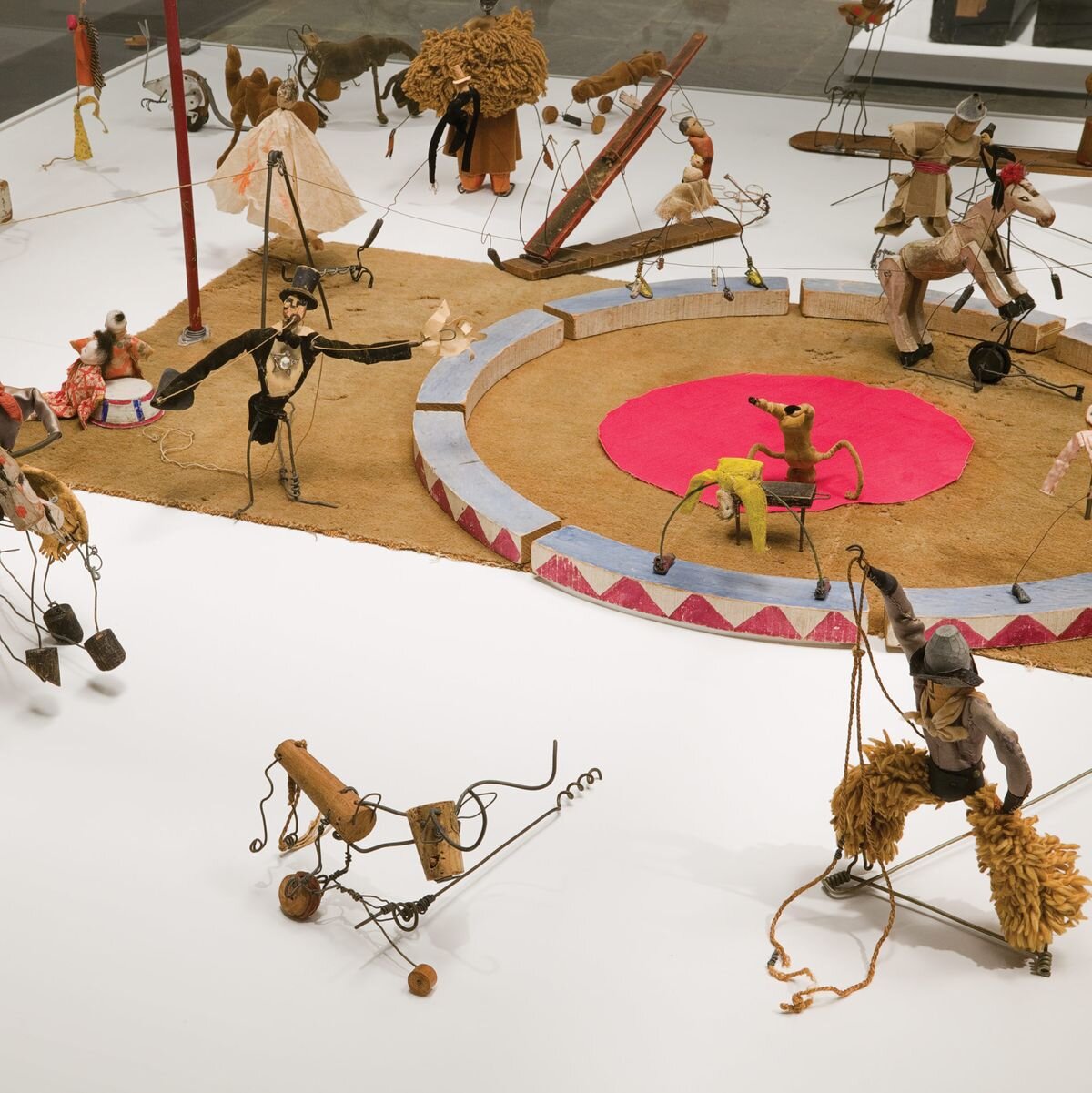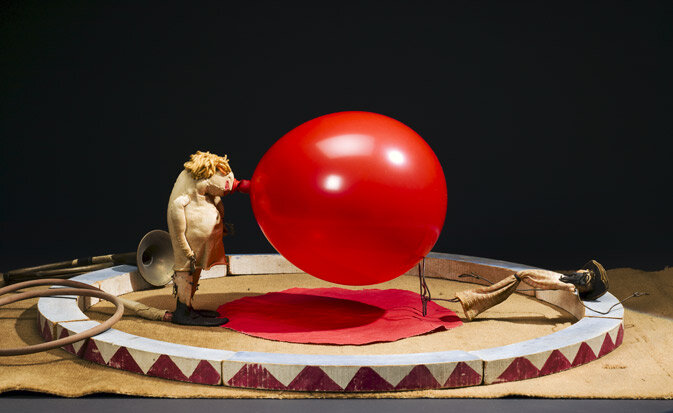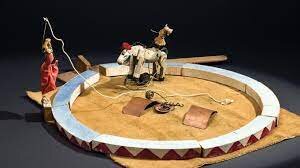CALDER -- AT PLAY IN THE FIELDS OF ART
PARIS, 1930 — The budding artist had seen enough of realism. Stiff statues like the one his grandfather made of William Penn atop Philadelphia’s city hall. Pompous carvings like the one of Washington on New York’s Washington Square arch, his father’s work. Was sculpture condemned to be fixed in stone, staid, serious, “important?”
But when Alexander Calder stepped into the studio of Piet Mondrian, he saw the future of art, and it moved. Eyeing Mondrian’s vibrant primary colors, Calder thought, “perhaps it would be fun to make these rectangles oscillate.”
Every child knows the drill. Plastic straws, string, and a few baubles, balanced and hung from the art room ceiling. But before Calder (B.C. in the art world), not a single artist made art come alive. Nor did any attempt to “draw in space.” It took a genius, part mechanical engineer and part eternal child, to give sculpture the flow of nature.
“His mobiles,” wrote Jean-Paul Sartre, “are at once lyrical inventions, technical, almost mathematical combinations and the perceptible symbol of Nature: great elusive Nature, squandering pollen and abruptly causing a thousand butterflies to take wing.” Calder, economical with words as well as wire, said simply. “Above all, art should be fun.”
The fun began at an early age. By the time he was eight, Calder was making his own toys. Fashioning ducks and dogs out of wire. Rigging wheels to make them move. In high school, he made model trains powered by pulleys and levers. But his parents, both artists, did not want their son to struggle through the art world, so “Sandy” Calder studied mechanical engineering.
"I was not very sure what this term meant, but I thought I'd better adopt it.”
Graduating in 1919, Calder worked low tech jobs — hydraulic engineer, draughtsman, mechanic on a steamship. A few years in labor’s trenches, however, made him yearn for creativity, for design, for fun. After studying at New York’s Art Students League, Calder moved to Paris in 1925 and began to play in the fields of art.
His first sculptures were toys, fashioned from wire, string, and old rags. Fascination with the circus steered him to animate wire horses, lion tamers, ringleaders, acrobats. Using wheels and levers, he made each move with startling accuracy. Calder kept playing until the Cirque Calder filled five suitcases.
New friends, including the artists Marcel Duchamp and Fernand Leger, urged Calder to put his circus on display. One night in 1931, in a gallery on the Right Bank, the Parisian avant-garde gathered to watch the 32-year-old American, on his knees, playing circus. Decades later, as a gruff old man, he was still having fun with it. Watch:
His toys were amusing but serious art demanded size, shape, dimension. Wire jewelry had been worn for millennia but Calder was the first artist to sculpt with wire. From acrobats, he moved on to birds, bulls, and faces uncannily alive. In 1933, when he returned to America, he began showing his work in galleries and at the new Museum of Modern Art in New York.
Among the works on display were magical pieces unlike any previous sculpture. Wire contraptions, they balanced shapes in space, defied gravity, and moved, first with motors, later with the breeze. Marcel Duchamp dubbed them with a pun combining the French words for “motion” and “motive” — mobiles.
“Some forms moved in slow, deliberate arcs,” wrote critic Robert Hughes, “suggesting planetary motion and the music of the spheres. Others trembled like aspen leaves, or wiggled and danced, or quivered with a delicious solemnity.”
Calder’s work brought smiles and wonder. “Just as one can compose colors or forms,” he was learning, “so one can compose motions.” Yet no one wanted their own mobile. Where could you hang one? So Calder struggled on, playing and working in a Connecticut barn turned studio. Then in 1952, he took first prize at the Venice Bienalle. Suddenly famous, he began to sculpt for the world.
Moving from mobiles to “stabiles,” Calder spent his last 25 years making monumental sculptures for monumental places. JFK airport in New York. UNESCO headquarters in Paris. Expo 67 in Montreal, and the Mexico Olympics the year after. He also colored a Douglas DC-8 and a BMW. But his favorite work was a mobile at the University of Caracas.
“Floating Clouds” was intended as an outdoor sculpture but when the new auditorium displayed faulty acoustics, the 31 “clouds,” some weighing a ton or more, were hung from the ceiling. As they were lifted, an orchestra played.
The man who set art in motion died in 1976 but his inventions continue to move people. Original Calder mobiles now sell for millions, but Calder’s genius has not been confined to art aficionados. Just ask any child in the art room.
“My fan mail is enormous,” Calder once said. “Everyone is under six.”


















